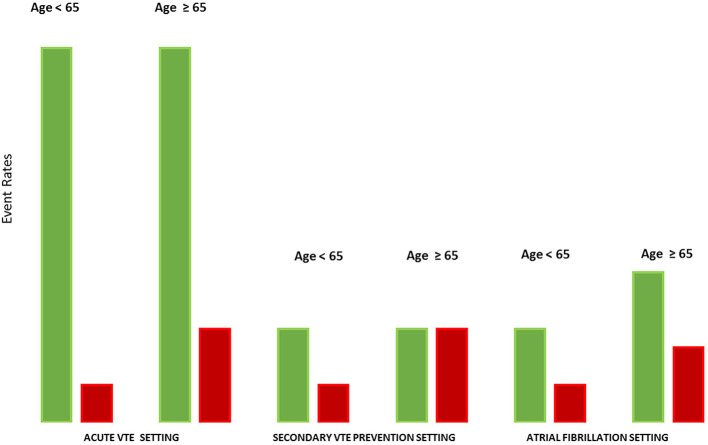Figure 2.
The dynamic between thromboembolic and bleeding risks according to age in various settings. The figure shows the dynamic between thromboembolic and bleeding risks according to age and to clinical indications. In the acute VTE setting, without anticoagulant therapy, the risk of recurrent VTE is very high irrespective of age. Although bleeding risk on anticoagulation increases with age, anticoagulant therapy is associated with a net clinical benefit in acute VTE treatment in younger and older patients. In the secondary VTE prevention setting, the risk of VTE recurrence after a treated index event is lower compared to the acute VTE setting and similar in both younger and older patients. Because of higher bleeding risk, the benefit of anticoagulation for secondary VTE prevention is likely reduced in older patients compared with younger patients. Consequently, VTE guidelines are less strong in recommending extended anticoagulation in older patients. By contrast, the risk of cardioembolic stroke in AF rises with age and thus most older patients continue to benefit from anticoagulant therapy despite a higher bleeding risk. Despite the similar definition of major bleeding, the consequence of a venous thromboembolic event and an arterial thromboembolic event are not equal. Green, thromboembolic risk in absence of anticoagulant therapy; Red, major bleeding risk with anticoagulation.

